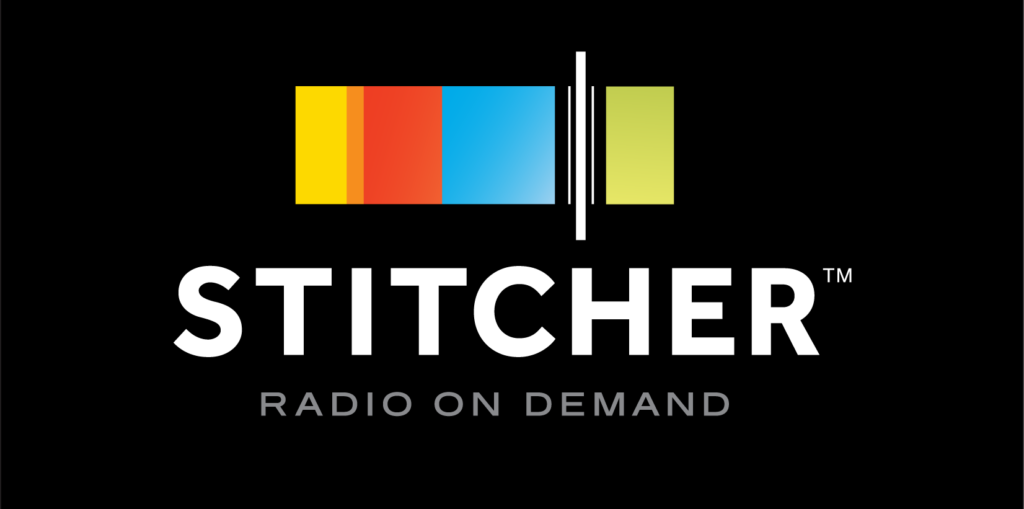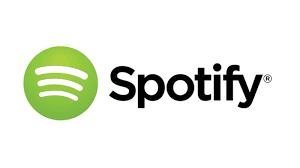
What I Learned About Finding Clients in 2019
As business owners, most of us are really good at setting big goals for our business. Especially revenue goals, but many times we don’t think about what it’s going to take to actually reach that goal. Or what will be involved with finding clients to meet that revenue goal.
I speak from experience as someone with many an ambitious goal that wasn’t met because it wasn’t grounded in reality. For many people, those big goals are super motivating, but for me, they’re soul crushing when I fall short.
So instead, I’ve been focusing on goals that push me, but don’t break me. Going into 2019, I had a goal to increase overall revenue for my agency, Scoop Studios, and to increase profitability.
While we’re still crunching final numbers, I can safely say that my mission has been accomplished. Agency revenue is up 52% and more importantly, profitability is up 39%.
Before we go any further a few important notes:
1. My baseline 2018 revenue numbers are skewed due to the exit of my business partner and how our financials were set up in our venture. For the first four months of 2018, not all of our agency revenue was reported through my corporation, so that impacts the 52% increase. Adjusting for revenue through her corporation in 2018, we ended 2019 with a 40% increase. Also, with her departure we cut off an entire service line in our business, which resulted in a significant revenue dip. Much of 2018 agency revenue reflects needing to recover from that and rebuild the business.
2. I don’t share actual numbers as I believe them to be misleading and lacking context. Detailed income reports usually send me directly into a spiral of unhelpful thinking, so I’m not going to contribute to that.)
In this post and podcast episode, I want to share some real numbers to give you an idea of what it took to increase revenue in 2019, and more importantly, what I learned about finding clients.
Table of Contents
The Backstory: From Passive to Proactive Lead Generation
Going into 2019, we’d been shifting our client base to work with more and more tech and professional services companies, so I recognized that we needed to shift gears when it came to how we were generating leads.
The name of the game was diversifying our lead sources as we were very reliant on both inbound leads and referrals. Both sources had been solid ways of finding clients, but they were dependent on other people and our reach was limited. My professional network, while solid, only goes so far, and I didn’t want to have to wait for people to come to us.
In late 2017, my (now former) business partner and I realized that we were far too passive with our lead gen. For 2018, that led to me investing my time speaking and networking locally. Both of those activities led to new clients and relationships in that year, but I noted a few things. First, I was bound by geography, and while I’m located in what’s nicknamed “Silicon Valley North” so there are many ideal clients, it’s still a limited pool. Secondly, speaking and networking are time-consuming, and frankly, not well-suited to how I like to spend my time. This diehard introvert likes to engage on her terms, and having to speak at a breakfast meeting at 7:00 a.m. isn’t something I’m into.
Let’s be real, over the years, I’ve done pretty much all the things when it comes to finding clients. But there’s one thing I’d not yet tried and I knew it would be a perfect fit with Scoop’s audience.
Finding Clients: Cold Outreach Gets Added to the Mix
In January 2019, we added cold outreach using LinkedIn as a way to connect and build relationships with potential clients. I won’t get into the nuts and bolts of exactly how we did it, but it comes down to identifying and then reaching out to prospects using LinkedIn. (Alternatively, email can also be used for cold outreach.)
While I knew many people who were using this tactic with success, going into this I was very skeptical. I was struggling with a number of stories in my head about how doing this was pushy, desperate and downright tacky. I was also concerned that people would be really mean and tell me off.
A year later, I can tell you none of those stories were true. And adding cold outreach to the mix was one of the smartest business decisions I’ve made in a very long time.
To measure how well cold outreach has been working, I’ve been fanatically tracking qualified leads, including their source, and how many of those have closed.
2019 Lead Generation by the Numbers
Let’s dive further into those numbers.
Overall, we had a total of 60 qualified leads in 2019, as of December 15, 2019. I had to pick a cut off point for these numbers as we had to get this post done before the end of the year. (That said, revenue percentages are based on final 2019 numbers, as they were added in at the last minute.)
I currently break lead sources by four categories:
- Cold Outreach: A lead we identify and nurture via outreach on LinkedIn. I only include prospects where there’s been a meaningful back and forth regarding potential work or a call held.
- Inbound: These are leads that come to us via the website. They’re typically the result of Google search or via Copyblogger as I’m a Master Level Certified Content Marketer and listed in their directory.
- Referral: Exactly what it sounds like. They’ve been referred to Scoop and they’re usually introduced to us via email.
- Existing Relationship: This is typically a past client who’s returning or someone we consider a friend of Scoop.

With leads, they get one of three statuses once we’ve engaged with them and/or have been sent a proposal. They’re either considered won, lost or not a fit. The not a fit category means they didn’t get a proposal and through our dialog with them either decided it wasn’t a match, or we declined to work with them for various reasons. You’ll note a fourth category “pending” that reflects three proposals we were waiting on a final decision from as of December 15th. 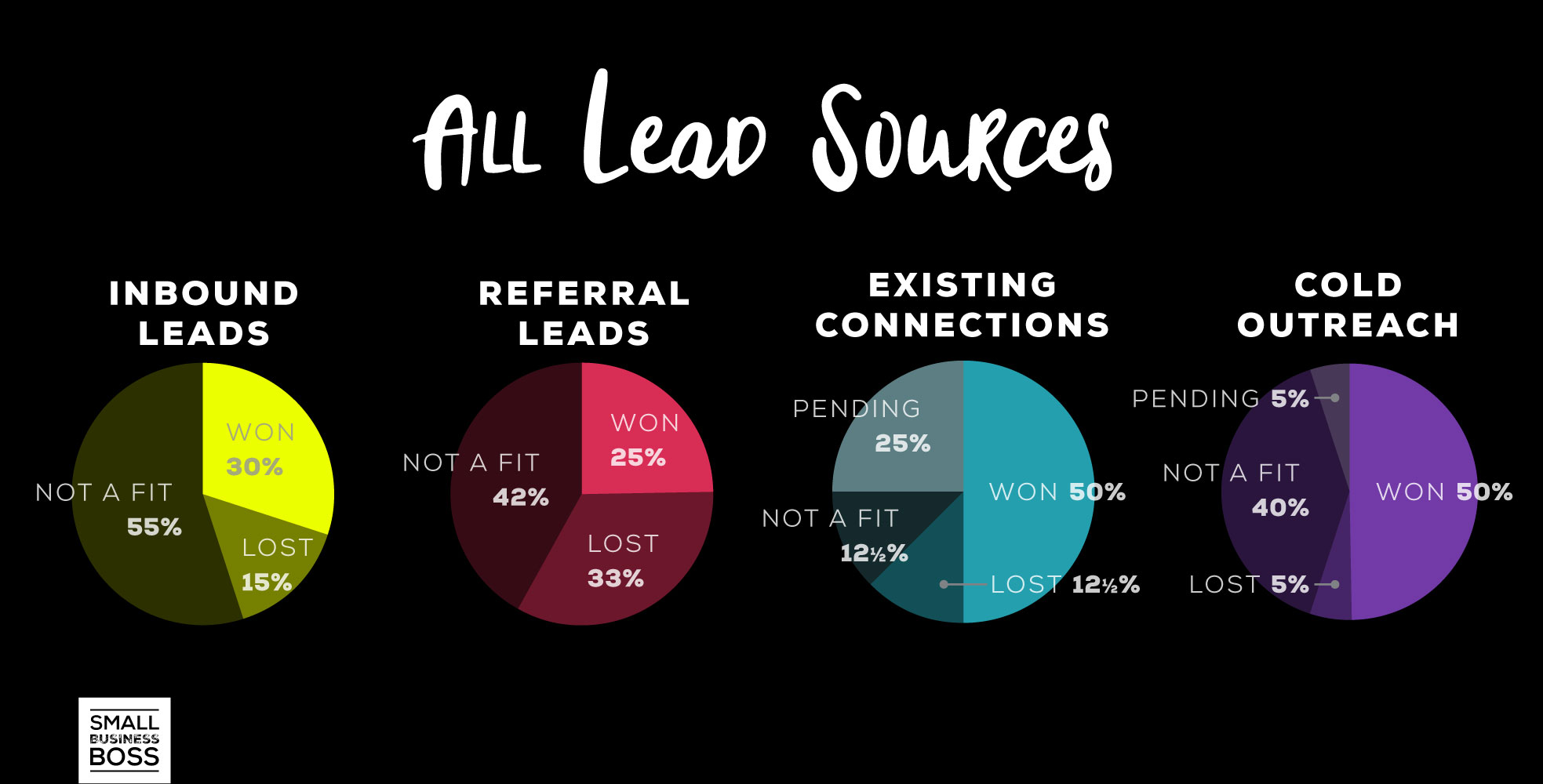
Inbound
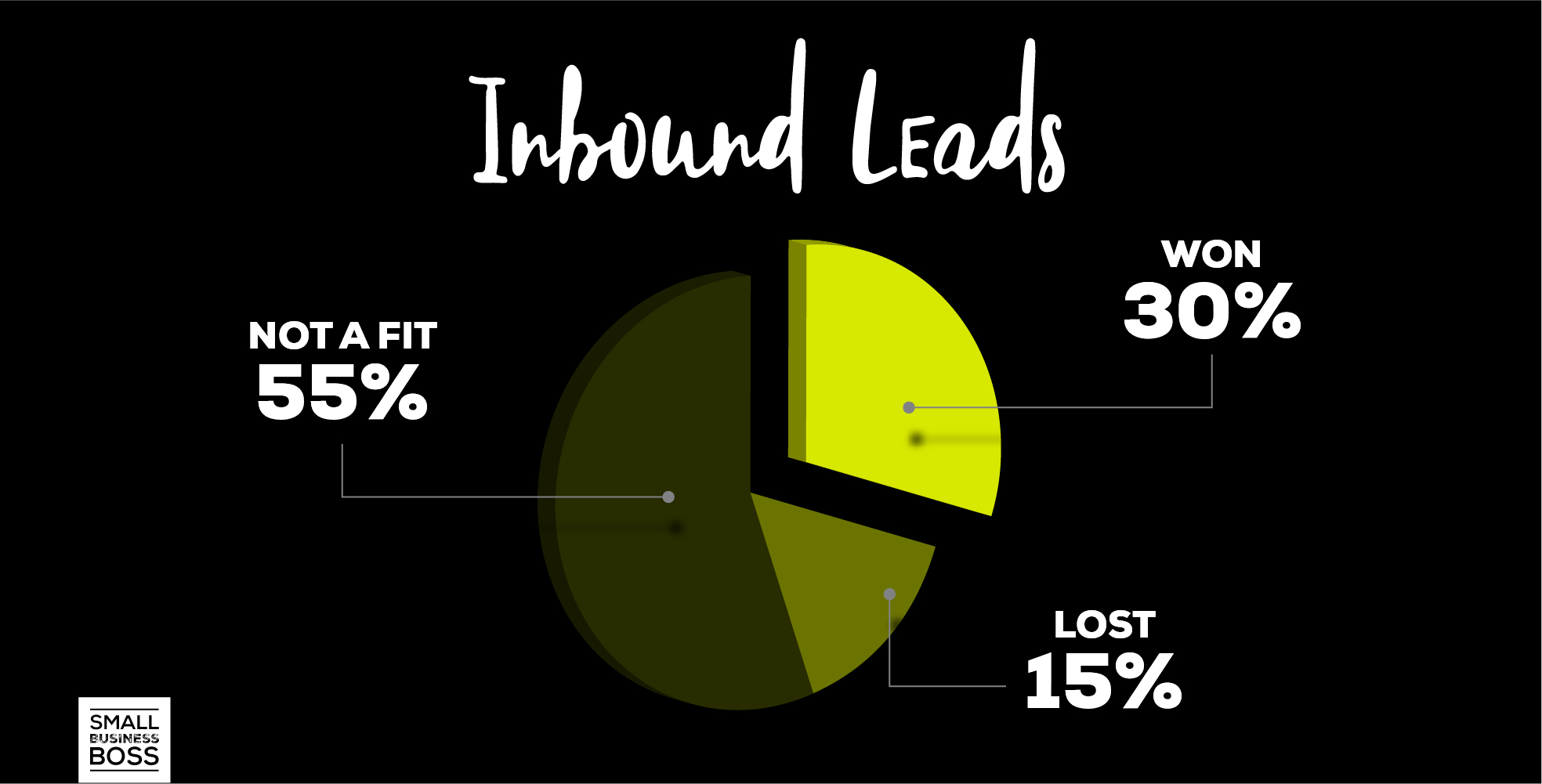
While inbound leads are tied as our #1 source, they only closed 30% of the time, and 55% of them don’t even make it to the proposal stage. In short, these leads convert at the lowest rate.
When it comes to inbound leads, while we’ve landed some amazing clients this way, it’s the least reliable way of landing clients. This is why I’ve always seen inbound leads as gravy as there’s often a disconnect between their budget expectations and our pricing.
Referrals
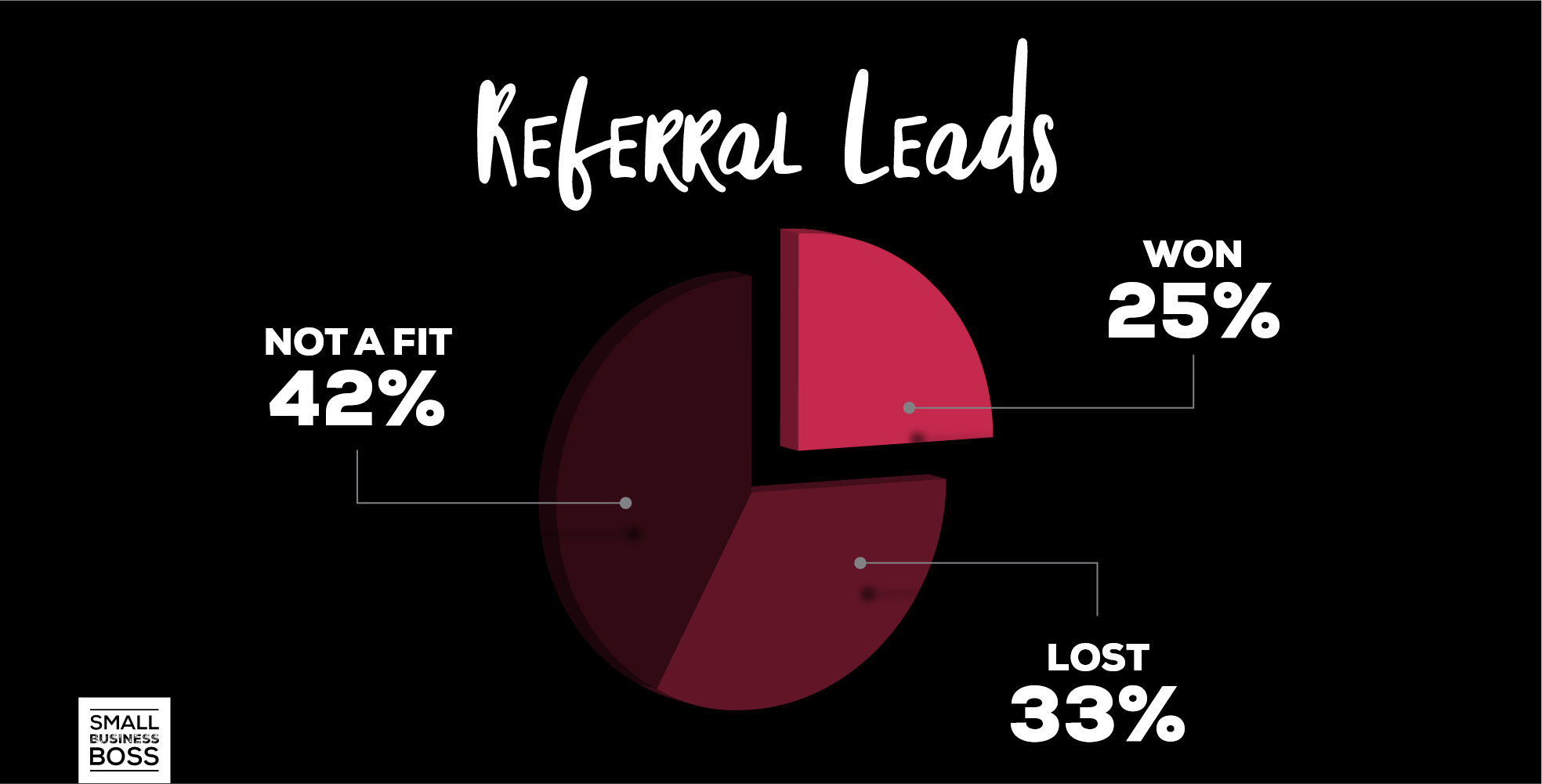
Referrals have an even worse close rate than inbound, with a 25% win rate and more interestingly a 33.3% loss rate. I know for a fact, the referrals we lose are based on price, and that’s likely the result of us not having a budget conversation up front or their expectations not being aligned with reality.
Then there are 42% of referrals that don’t make it to the proposal stage. While I appreciate referrals, many times they’re not a fit with our services and we refer them on to someone who is.
I’ll be the first to admit that the process of getting referrals was completely passive in 2019. Unlike past years where I went out and asked current/past clients for referrals, I spent my energy elsewhere in 2019. In 2020, I need to do a better job of clearly articulating who makes for a good referral and asking for them more often.
Existing Connections
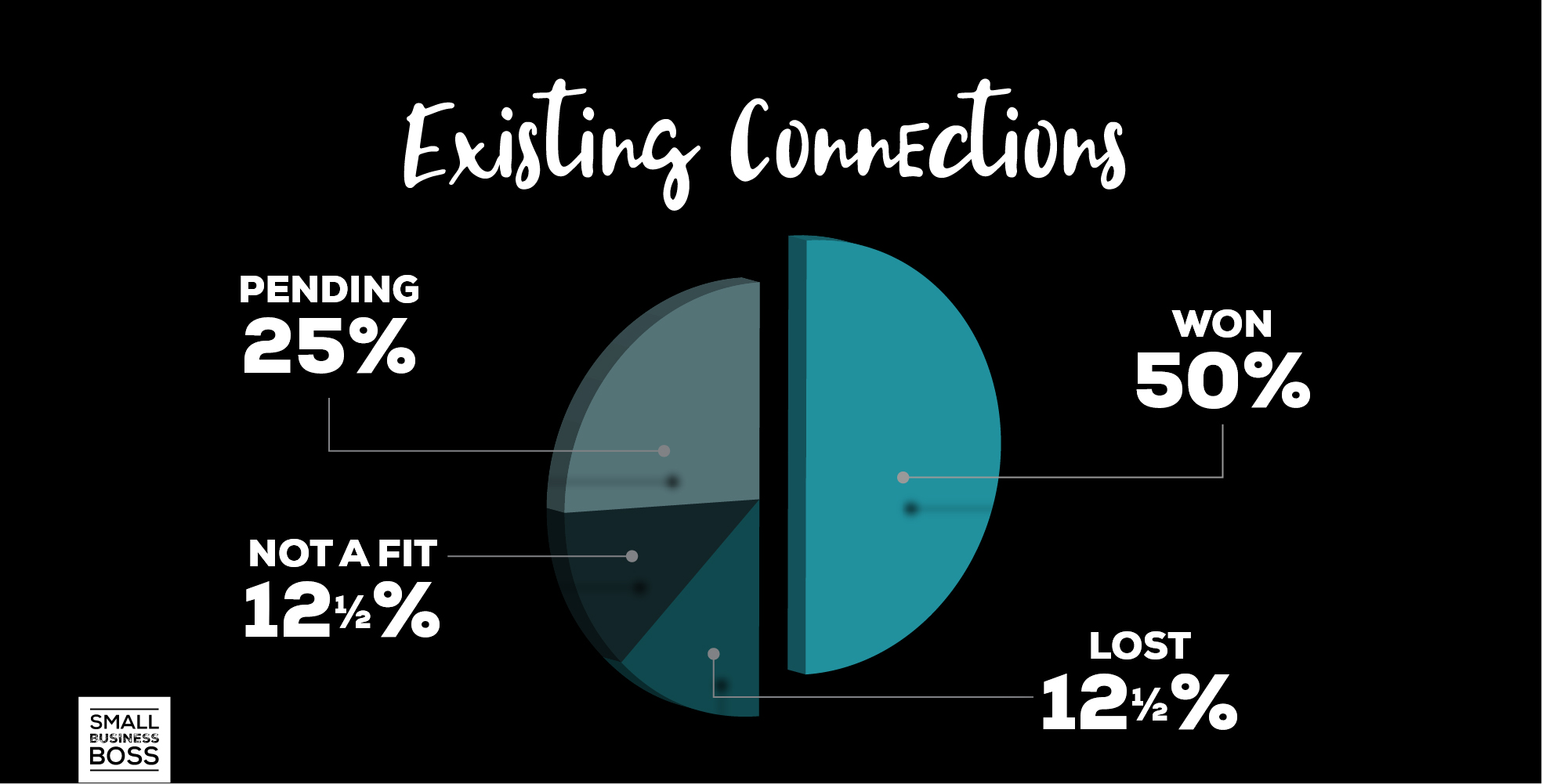
When it comes to winning clients, these leads are the clear winner as we closed 50% of these deals. This speaks to the level of qualification these potential clients have—they know our work well, they trust us, and they know exactly what to expect.
The lesson in this is to keep your past clients close, as they’re likely to come back for more. Also, don’t forget about them, as they’re the easiest and fastest way to land new clients.
Cold Outreach
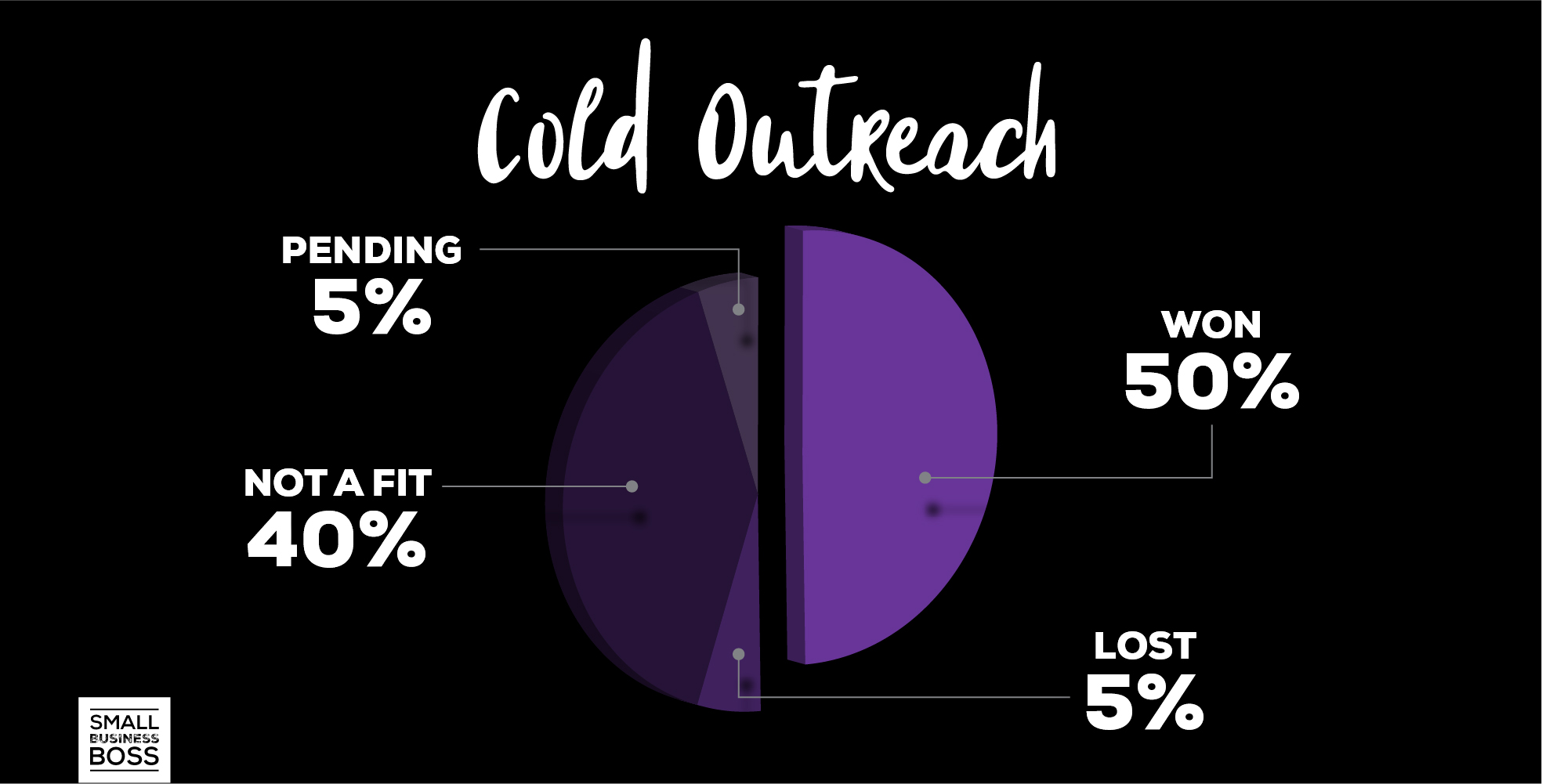
To be honest, these numbers floored me, which is what inspired me to write this post. With cold outreach, we have a 50% win rate, which is better than inbound or referrals. This is extremely telling as these prospective clients are completely aligned with our focus, and best of all, we’re able to preclude many of them before we get to the proposal stage.
In fact, of the 12 qualified cold outreach prospects we’ve written proposals for, we’ve only lost a total of one. This speaks to the efficiency of targeting the specific customers who need what you offer and getting potential deal-breakers around the budget out of the way in pre-qualification.
Cold Outreach to Find Clients Isn’t a Cure-All
Before I get into the numbers, a quick caveat as I don’t want you to think cold outreach is the answer to all of your lead gen problems. First, it’s not suitable for every type of business. It works for Scoop because we play in the B2B market. If your business is in what I call the B2E market, this may not be the best tactic for you to use.
Second, cold outreach takes ongoing time and energy from me and my team. Relationships are the name of the game, and a considerable amount of my time is spent chatting with people, sending our portfolio or one-pager and getting prospects on a call. This works for me as it’s compatible with how I like to spend my time, and I’d much rather engage with people this way than have an awkward conversation at a networking event.
The reason I’m doing this deep dive is less about “go do cold outreach” and more about getting you to think critically about what actions you’re going to take to help bring in new leads. If you have a goal to increase your revenue, continuing to do the exact same things you’ve been doing year over year isn’t necessarily going to get the job done.
How This Played Out with 2019 Revenue
Now that we’ve talked about lead sources and the lessons I’ve gained that I’m taking into the new year, let’s get into the impact these leads had on overall revenue for Scoop.
As a quick reminder, 2019 revenue for Scoop Studios was up by 40% over 2018. And while I’m confident that we would’ve seen revenue growth if we’d continued doing what we were doing, I honestly don’t think we’d be in the same place if we’d not added cold outreach to the mix.
Here’s the impact of these lead sources as a percentage of new revenue this past year: 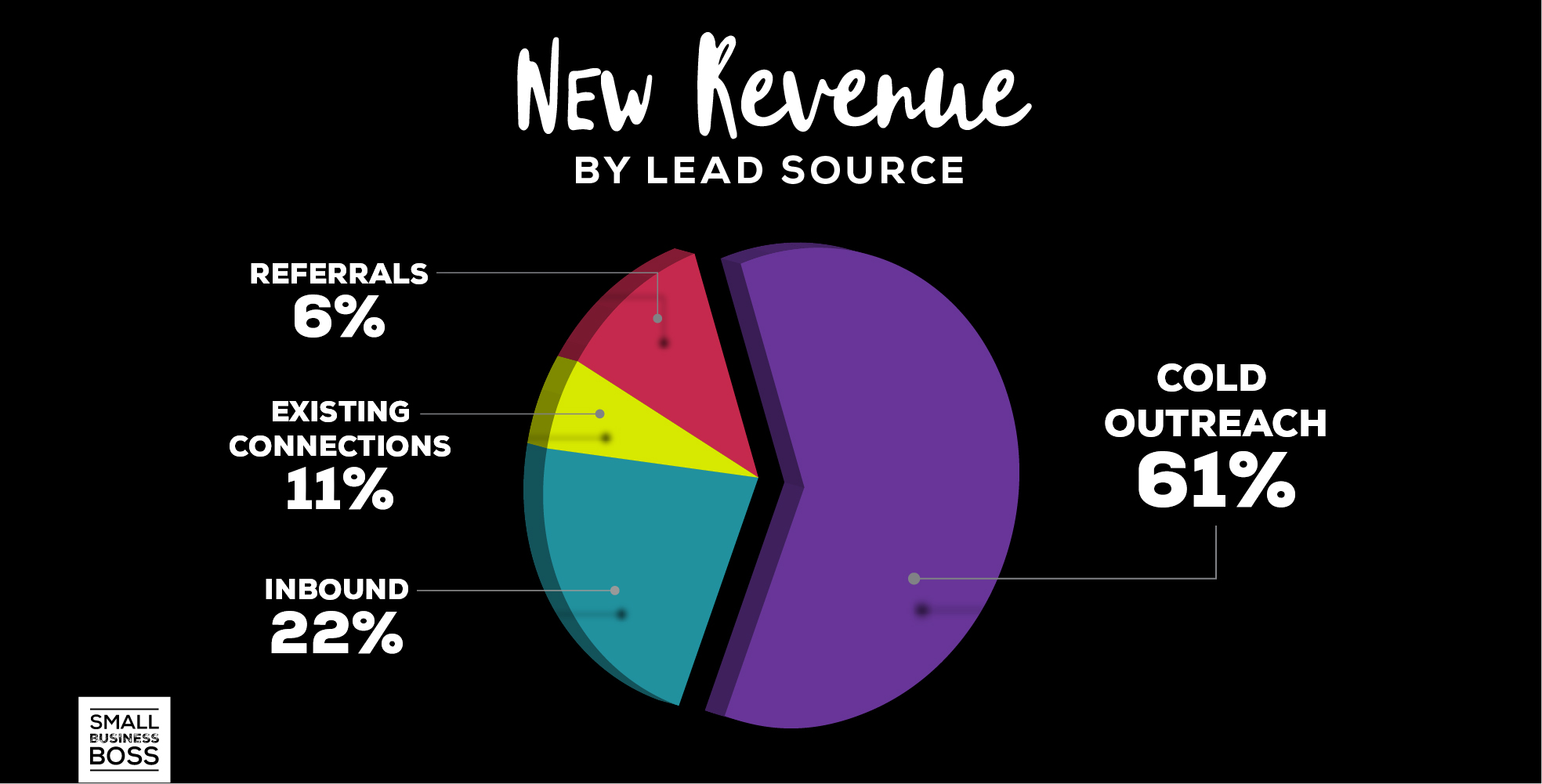
The numbers are clear, cold outreach is the hands-down winner when it comes to new revenue in 2019. Revenue wise it has generated 3X the revenue of any other lead source. Truthfully, that’s affirming to me as it’s been at least 3X the effort of any other lead source.
Diversifying how we generate leads (yet again) has been a solid business decision, and one that if we’re getting new clients, I never ever regret.
My challenge to you is to figure out what it is that you need to be doing to generate not just more leads for your business, but better quality leads that are aligned with your ideal client and offerings. For Scoop, cold outreach has been a significant win as it gets us in front of our clients and lets us communicate with them in a way that’s the right starting point for a potential working relationship.
For your business, cold outreach may not be the answer, but I’m willing to bet there’s a new way to find new clients that’ll work for you. For one of my clients that works with entrepreneurs, that’s been guest-starring on podcasts. For another one that’s been writing for industry publications, and for yet another, it’s been in-person networking and speaking.
I know for each one of them, and for me, it’s taken a commitment to be willing to learn how to do something new, and following through on seeing how it may work.
How exactly you go about finding clients matters less than being willing to try new ways of doing things and learning new skills.
Want to Make More Money? Try Something New.
Can you imagine what my 2019 revenue may have looked like if I’d let my stories about cold outreach being “desperate” to persist? I’d have focused my energy on generating leads in other ways, I’m confident I’d not have seen a 40% year-over-year increase.
Money aside, this evolution of how we generate leads has given me confidence and power going into 2020 about the direction in which we’re heading. As a company, we now have a higher caliber of clientele, with bigger budgets and most of all, clients we’re excited to work with. That’s not to say everything is perfect, but I do know we’ve taken a significant leap ahead by being willing to try new ways of finding clients.
Want help finding clients? Check out the Client Booking Map.

